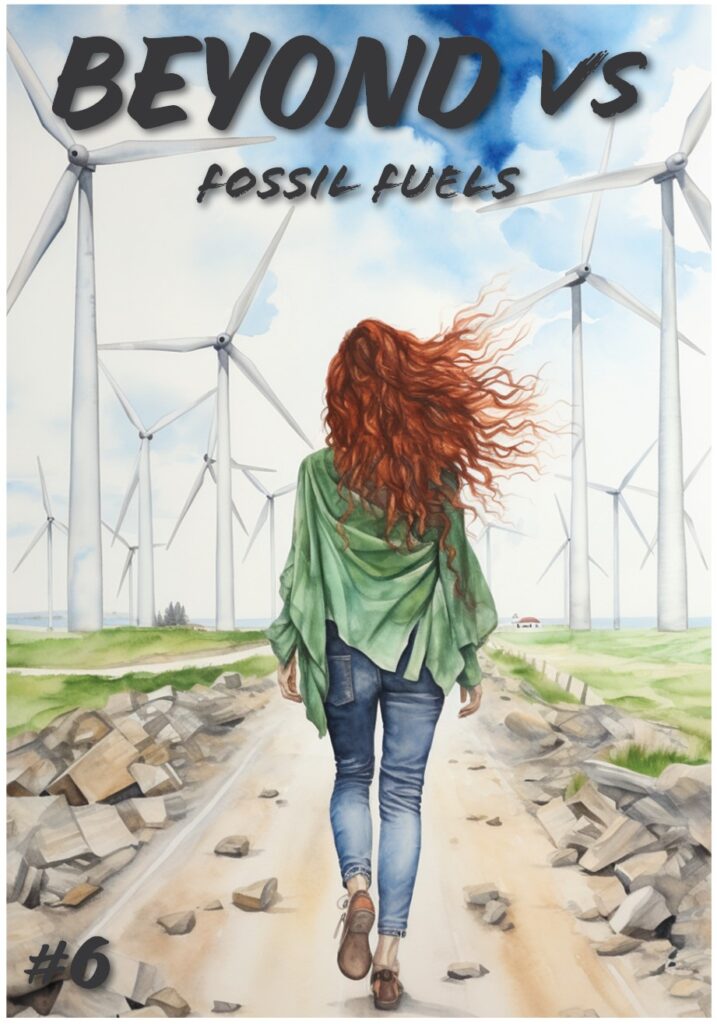The Journey to a Greener Future: Lessons from Beyond VS
In this beautifully illustrated graphic novel, Bey and her AI-powered sunglasses, OND, explore the pressing issue of fossil fuel dependency and its impact on the environment. The story starts with Bey noticing the smoggy air, leading OND to explain the phenomenon of temperature inversion and how it traps pollutants near the ground.
This is #5 in the Beyond VS series and is in the art style of messy watercolor with green hues. You can read the summary below or the full PDF here.
The Dark Side of Fossil Fuels
Ond elaborates on the harmful effects of fossil fuels, which go beyond just air pollution. From acid rain to water pollution, habitat destruction, and even geopolitical conflicts, the list is long and alarming. Ond also touches on the finite nature of fossil fuels, emphasizing that they won’t last forever.
The Renewable Alternatives
The conversation then shifts to renewable energy sources as potential solutions. Solar and wind energy are discussed, along with their limitations, such as storage and aesthetic concerns. Other options like hydroelectric, biomass, geothermal, and ocean energy are also mentioned. Ond suggests that a blend of these sources will be the key to a sustainable future.
The Role of Architecture and Transportation
Ond points out that the transition away from fossil fuels isn’t just about energy production; it’s a multi-disciplinary effort. Architects are designing more energy-efficient buildings, and cities are focusing on sustainable transportation plans. Electric vehicles (EVs) are highlighted as a promising avenue, especially as the energy grid becomes more renewable.

Individual Contributions
The graphic novel ends on a hopeful note, emphasizing the role of individual actions in this transition. From using public transportation and alternative forms of travel like biking to simple acts like turning off unused devices and buying local, everyone can contribute to reducing our reliance on fossil fuels.

Conclusion
The graphic novel serves as a comprehensive yet accessible guide to understanding the complex issue of fossil fuel dependency and what can be done to mitigate it. It’s a call to action for everyone, from policymakers to individuals, to work together for a greener, more sustainable future. And as Bey and Ond conclude, while the transition won’t happen overnight, every small step counts. So why not start with something as simple as enjoying a slice of pie, representing the various pieces of the renewable energy puzzle that can make our world a better place?

